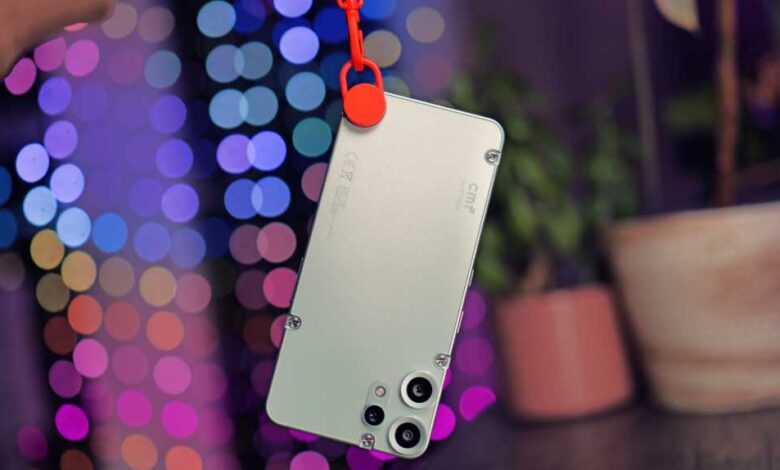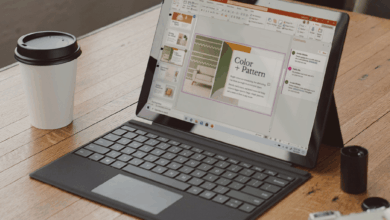CMF Phone 2 Pro review: The best budget phone (again)

The CMF Phone 1 was my favourite budget phone of last year, and honestly, probably my favourite budget phone ever. It’s an incredibly stylish phone with a fun modular design, which tend to be things reserved for pricey flagship devices – and not a phone that costs just over £200 or just under $200 in the US.
Now, less than a year later, its successor has landed. The CMF Phone 2 Pro has everything that made the original a hit, but it now comes with a better main camera, two new auxiliary lenses, a speedier chip, added NFC, and plenty more besides.
The “Pro” moniker hints that a non-Pro model could be on the horizon, but there’s no official word on that so far. Thankfully, though, the new model doesn’t come with much of a price hike. It has an MSRP of £219, just £10 more than the original CMF Phone.
The CMF Phone 1 was already incredibly easy to recommend, and all signs point to this model being even better, but the only way to know for sure is to test it out. After living with it for almost a week, here’s everything I learned.
Design & Build
The CMF Phone 2 Pro has a similar design to its predecessor. You still get the same Accessory Point screw in the bottom-right corner, along with the same exposed screws in similar locations across the back panel.
This is no bad thing, from a design standpoint, the CMF Phone 1 was already one of my favourites. I’m pleased to see that Nothing is leaning in the same rugged utilitarian direction for this model.
The most obvious change is with the cameras. The two larger lenses get their own circular aluminium-effect rings, while the ultrawide and flash unit sit on a separate elongated island. It’s not a drastic change, but it’s immediately noticeable, and it’s a clear indicator that the CMF team has put some work into the optics.
Another big change is with the finish of the rear panels. Nothing describes the Black and Light Green options as having a frosted glass-like finish with a metallic frame. Meanwhile, the Orange version has a metallic sheen, and the White option has a “panelled sandstone finish.”
So, not only do you get more colour options to choose from, but you get some more variety in the way that each back feels. Of course, if you’re having trouble deciding, there’s nothing to worry about, as you can swap casing to your heart’s content. All you need is a screwdriver and a few minutes of fiddling.
I have the Light Green model in for testing, and it feels a touch more premium than the matte black CMF Phone 1 that I tested previously. It is still made from plastic, but it’s much harder to tell. While I quite liked the fingerprint-resistant matte finish of the older model, it felt like it could get scuffed up easily, and this new finish seems like it will fare better in the long term.
The Accessory Point cap has been slimmed down on this model, and it doesn’t stick out as much as it did on the original CMF Phone. It makes the overall look a little more cohesive, but it also makes it harder to remove. This could be a good or a bad thing. I never had trouble with the cap loosening on its own, but it’s easy to imagine that happening – the slimmer version seems like it’ll stay put much better.
Aside from the dimension change, the Accessory Point itself is unchanged. I was able to use the same lanyard accessory with both models without issue. As for the other accessories, unfortunately, I wasn’t able to try them myself, but the lineup seems to be very similar. There’s a wallet, a kickstand, and the aforementioned lanyard. However, the positioning of the screws and the shape of the cameras mean that CMF Phone 1 rear panels won’t work with the newer phone.
There are a couple of new accessories that have been added to the roster, too. You can now attach either a fisheye or macro lens adapter. I haven’t tried these, so I can’t speak to the quality, but the two lenses will be sold as a set for £35, and could be worth investigating if you want to add variety to your shots and can’t afford something like the Xiaomi 15 Ultra.
With these big exposed screws staring at me, I couldn’t resist whipping the back off, and the experience was a little different than I expected. It’s a lot harder to remove the rear casing this time, and I had to grab a spudger to separate it. Once inside, there’s also some adhesive keeping the rear panel in place. I’d assume this is all to do with the higher IP54 rating of the Phone 2 Pro.
What was even more surprising, though, is that the battery is readily accessible as soon as the back is removed – it’s no longer shielded under additional panelling. It’s not hot-swappable, and you’ll still need some expertise to perform the operation, but if you ever need to replace the battery, this will still be a lot easier to repair than your average handset.
The Essential Key that debuted with the Phone (3a) series has arrived here, too, and we’ll talk more about what it does later on.
When it comes to durability, I’ve already mentioned the IP54 rating, which is an improvement over the IP52 rating of its predecessor. But you also get Panda Glass on the screen, which is a more affordable Chinese-made alternative to Gorilla Glass.
It should do a decent job at protecting the screen from scratches and cracks, but the Phone (3a) has the same glass, and I’ve already managed to make some light scratches on that, so your mileage may vary.
If you like to err on the side of caution, there’s a basic plastic screen protector applied that you can leave in place, and you also get a basic transparent TPU case for added peace of mind.
Screen & Speakers
The CMF Phone 2 Pro has a slightly larger screen than its predecessor, but the difference is tiny. I think it’s mainly due to the slimmer chin bezel, but in any case, just like last year, this is a big, spacious display that’s great for watching content and gaming.
There are two key differences that make this an improvement on the older model. The first is that it now supports 10-bit colour, rather than 8-bit. This makes a big difference, not only in colour accuracy, but it also drastically reduces the appearance of colour banding when there’s a gradient being displayed.
The second change is that the screen is brighter, now boasting a peak brightness of up to 3000 nits, while the older model maxed out at 2000 nits.
To be honest, I didn’t have many complaints about the screen on the original, but when viewing them side by side, the improvement is plain to see. It’s a very welcome upgrade, and almost certainly one of the best screens in this price bracket.
The display is fully flat, but there’s now a subtle chamfered trim around the edge. I’m especially pleased to see this, as the CMF Phone 1 had a tiny raised lip around the edge.
It’s a very minor change, but it’s a change for the better, and gesture controls feel much smoother when you swipe from the edge.
Unfortunately, the audio situation hasn’t really improved. You still only get a single speaker, so there’s no stereo effect. And while the sound is very clear, it lacks low-end response, so it sounds a little more tinny than I’d like. It’s far from the worst speaker around, but don’t get your hopes up.
Perhaps Nothing is angling for you to buy a pair of its earbuds.
Specs & Performance
The CMF Phone 2 Pro runs on an upgraded version of the same chip that powered the Phone 1. At its core, it’s the same efficient 4nm chip, but Nothing says you can expect 10% faster processing as well as a 5% improvement in graphics performance.
The phone is available in two different configurations, both have 8GB of RAM, but you can choose either 128- or 256GB of storage. I have the larger capacity model for testing, but in terms of performance, both should deliver the same results.
It’s also worth noting that there’s a microSD card slot, which is a rare find these days. So, in any case, the storage can be expanded up to a whopping 2TB.
I’d be lying if I said I could notice a difference between the two processors in real-life usage, but in benchmark scores, it’s more apparent. Indeed, as Nothing claims, the processing power has clearly been bumped up a notch, but the change in gaming performance is slight – it’s better, but not enough to make a tangible difference.
Just as I found with the previous model, day-to-day performance was perfectly adequate. The phone never feels slow, even while multitasking, and it’s only when performing a system-wide search that you can feel the difference between this and a higher-end chip. It just takes a moment longer to populate the results.
Gaming is great on less graphically intensive titles, but if you push the limits with something like Genshin Impact, you’ll need to use the lowest preset to get a stable 30fps. Still, it’s impressive that a phone this affordable can play such a demanding game in the first place, and it doesn’t get too hot in the process.
Another big change with the CMF Phone 2 Pro is that it now supports NFC, so you can make contactless payments with Google Wallet. I’m really pleased to see this, as it was one of the biggest drawbacks to the original model.
Cameras
The camera system is arguably the biggest upgrade on the CMF Phone 2 Pro. Last year, we only got one usable lens on the rear, joined by a depth sensor that seemed to mostly exist for aesthetic reasons.
Now, though, there are three proper cameras: a 50Mp main, an 8Mp ultrawide, and a 50Mp 2x telephoto.
It’s not just extra cameras that have been added here, the main camera has been significantly upgraded, too. It now has a 1/1.56-inch sensor, one of the largest sensors you’ll find in this price category. That means it’s much more capable in low-light conditions and can create some authentic bokeh when you get up close.
As usual, the main sensor does the heavy lifting, and if you want the best-looking shots, it’s the safest bet. It’s also the best for macro photography. That said, the telephoto lens is almost as impressive.
Personally, I would have loved to see a slightly longer reach, but 2x is just enough to give a different vibe to your shots. It’s the default lens when you switch into Portrait mode, and it looks great for that, with much less distortion than the wide main sensor.
You also get options to digitally zoom further in Portrait mode, with 4x and 6x buttons in the UI. It’s an unexpected addition, and





